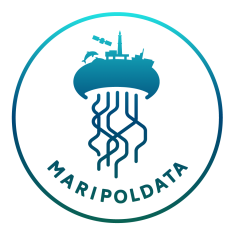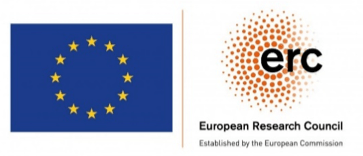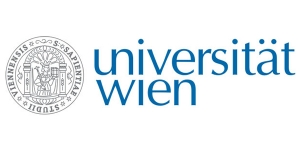(Marine) Territories? Conventional and dynamic ABMTs, and the contribution of Indigenous People and Local Communities
This contribution is part of a MARIPOLDATA blog series on current developments and discussions about the negotiations towards an international legally binding instrument under the United Nations Convention on the Law of the Sea on the conservation and sustainable use of marine biological diversity of areas beyond national jurisdiction (BBNJ). In this series, the team publishes updates on the four package items under the BBNJ Agreement which are planned to be concluded in 2022 (Marine Genetic Resources (MGRs), Area Based Management Tools (ABMTs) including Marine Protected Areas (MPAs), Environmental Impact Assessments (EIAs), and Capacity Building and Technology Transfer (CBTT)) from the intersessional online discussions taking place on MS Teams since September 2020, the virtual High Seas Dialogues taking place under Chatham House rules, and the MARIPOLDATA Ocean Seminar Series in which scholars and practitioners present and discuss current issues of ocean governance.
Current practice in ocean protection
Life as we know it depends on the health of the ocean (Gjerde et al., 2019), but we continue to perform practices that alter its ecological balance, such as overfishing or polluting the atmosphere. As a response, the international community negotiates the development of a new treaty that would enable the conservation and sustainable use of marine biodiversity in areas beyond national jurisdiction (BBNJ). To fulfill this task, delegates address the designation of area-based management tools (ABMTs) and marine protected areas (MPAs), which are geographically delimited marine areas – or marine territories – where human activities are regulated or prohibited for ocean management and conservation. They afford higher protection than their surroundings: ABMTs focus on economic activities – i.a. fishing, shipping, deep-sea mining –, while MPAs aim at the long-term in situ conservation of marine ecosystems (D. Johnson et al., 2018).
While it is common practice to designate ABMTs and MPAs around the globe for ocean protection (see Drankier, 2012), such marine territories mainly constitute motionless tools that disregard the intrinsic movement of water and species to help us estimate our impact on the ocean.
In view of this situation, states also implement dynamic ABMTs, and mobile MPAs, – whose boundaries shift in space and time according to the movement of migratory species and movable habitats (Maxwell et al., 2020, pp. 252-253) – but they face legal challenges.
In this blog article, we shed light on the weaknesses of ABMTs and MPAs and their inflexible approach to a fluid ocean, the challenges of dynamic approaches towards marine management, and the contribution of Indigenous People and Local Communities (IPLCs) in improving our knowledge on the ocean, as well as providing alternative forms of engagement with the marine environment.
Our discussion is partially informed by the MARIPOLDATA Ocean Seminar webinar from March 24, 2021, with Prof. Dr. Kimberley Peters (Professor at the Helmholtz Institute for Functional Marine Biodiversity at the University of Oldenburg (HIFMB)). You can read the summary of the session by clicking here.
Key arguments
- Conventional ABMTs and MPAs set fix boundaries in an ever emerging and fluid ocean.
- While dynamic ABMTs, including mobile MPAs, are worth further implementation, we need alternatives that can be applied sooner and in the long-term.
- IPLCs can help us reorientate and enrich current practices of ocean protection.
Land and (marine) territories
Territories are delimited and governed spaces by societies that determine whether and which types of activities are allowed in these bounded areas (Paasi, 2003; Peters, 2020, p. 4). Societies have traditionally thought of territories as flat spaces and measure them in square kilometers – “a flat measure of area” (Peters, 2020, p. 4; Steinberg & Peters, 2015).
To avoid such flat understanding of territories, researchers introduced the vertical dimension by firstly, considering the air, subsoil and surface, and secondly, arguing for control over both flat and three-dimensional spaces (Steinberg & Peters, 2015). That is to say, researchers kept focusing on motionless physical substances (Steinberg & Peters, 2015, p. 248).
Against this scenario, scholars considered the temporal dimension but often in a “periodized” way that oversees transformations of physical elements (Steinberg & Peters, 2015, p. 248). This is particularly problematic in the case of the ocean because water and species move vertically and horizontally (Dunn et al., 2017; O’Leary & Roberts, 2018). Thus, thinking of the ocean as we think of land – as a static space with volume and verticality – makes us grasp the marine environment as something it is not: “a space of fixed horizontal strata” (Steinberg & Peters, 2015, p. 258).
This is, however, how we approach the ocean by creating motionless ABMTs and MPAs (Peters, 2020). As (marine) territories, they follow “static and flat modes” of organizing the ocean, fixing limits around intrinsically mobile objects, such as marine water and species, and humans (Peters, 2020, p. 4-6). This raises the question:
- How can we manage and protect the ocean by delimiting it as we delimit land?
Dynamic marine management
Aware of the stationary character of (marine) territories, researchers propose to establish dynamic ABMTs, including mobile MPAs. Scientists shift the boundaries of these territories in near-real time by using data that enables them to track marine species and forecast their location (Maxwell et al., 2020, p. 253). This means that scientists constantly relocate the boundaries of dynamic ABMTs, including mobile MPAs, so that specific species are always protected.
To achieve this goal, scientists communicate the new location of dynamic ABMTs, including mobile MPAs, in short time. However, dynamic marine management faces the challenge of contradicting the principle of legal certainty. This principle has different interpretations but, in general terms, establishes that law must be predictable, stable, and reliable so that people are aware of the legal consequences of their actions (see Fenwick et al., 2017). Thus, shifting the boundaries of dynamic ABMTs and mobile MPAs according to the movement of species might hinder people’s ability to grasp the consequences of their activities in the ocean because species might move unpredictably, i.a. due to climate change.
Such situation leads to the questions:
- How can we improve current practices of marine management?
Our purpose is by no means to discourage the implementation of dynamic ABMTs, including mobile MPAs, but to highlight that our knowledge about ocean management is still developing (Gownaris et al., 2019) and that we need to improve how we govern human activities in the sea. Therefore, we have to further develop technologies to manage the marine realm, as well as expand our horizons by involving further understandings and ways of relating to the sea in decision-making processes (Peters, 2020), such as those of IPLCs. Their approaches can broaden the ways we think of the ocean, provide relevant knowledge and help us effectively conserve and sustainably use marine biodiversity.
Alternative ocean-related experiences: IPLCs and their traditional knowledge
IPLCs develop an intimate relation with the environment by thinking of themselves as part of nature and not aside from it (Escobar, 1998, p. 61). They might protect marine areas on spiritual grounds (Laffoley et al., 2017, p. 135) and do not allow fishing during non-foreseeable or pre-established periods, including when a leader dies or when they identify the need to conserve marine species (Mulalap et al., 2020, p. 5).
Many IPLCs understand the environment holistically, which enables them to grasp ecological processes, different species and further factors that influence the life of such species (Drew, 2005, p. 1288). Moreover, some IPLCs might have more detailed knowledge on marine species and ecological processes than scientists, as it has been the case with the Arctic region (CBD, 2014; Huntington, 2000).
However, why would we use the traditional knowledge (TK) of coastal IPLCs to protect marine biodiversity in the high seas? Because what happens in the coast affects the high seas due to the connectivity of the oceans (Dunn et al., 2017) as exemplified by the protection that IPLCs provide to marine species in international waters or “in connection with” them (Mulalap et al., 2020, p. 7).
TK can help us conserve and sustainably use marine biodiversity in the high seas because it provides knowledge on the connectivity across national and international waters, informs science on conservation and management of marine areas and species, and provides ocean-related practices that are environment-friendly (Dunn et al., 2017; Harden-Davies et al., 2020; Huntington, 2000; Laffoley et al., 2017; Mulalap et al., 2020; Nursey-Bray & Jacobson, 2014; Vierros et al., 2020).
How we decide to conserve and sustainably use marine biodiversity is driven by both the ways we relate to the ocean and what we know about the marine realm (Peters, 2020). As TK is “inseparable from its cultural context” (Dunn et al., 2017, p. 11) and we need to broaden the ways we think of the marine realm, both ocean and humanity would benefit from the participation – or at least increased representation – of IPLCs in the BBNJ Negotiations.
Recommendations for the BBNJ Negotiations
IPLCs are underrepresented in the BBNJ Negotiations (Mulalap et al., 2020; Vierros et al., 2020) where states introduce TK (own ethnographic observations) but fail to understand it on its own terms (Escobar, 1998). Thus, the participation of IPLCs is necessary for an appropriate representation of alternative ways of relating to the ocean in the BBNJ Negotiations. This would turn such intergovernmental meetings into a more participatory process that would enable diplomats to rethink and enrich our understanding of conventional or dynamic ABMTs and MPAs.
Thus, the MARIPOLDATA team recommends the participation of IPLCs in the BBNJ Negotiations to reorientate and improve marine maganement. IPLCs could help us reimagine our engagement with the ocean and could provide valuable knowledge to conserve and sustainably use marine biodiversity.
References:
CBD. (2014). Report of the Arctic regional workshop to facilitate the description of ecologically or biologically significant marine areas (Report No. UNEP/CBD/EBSA/WS/2014/1/5). https://www.cbd.int/doc/meetings/mar/ebsaws-2014-01/official/ebsaws-2014-01-05-en.pdf
Drankier, P. (2012). Marine protected areas in areas beyond national jurisdiction. The International Journal of Marine and Coastal Law, 27, 291-350. https://doi.org/10.1163/157180812X637975
Drew, J. A. (2005). Use of traditional ecological knowledge in marine conservation. Conservation Biology, 19(4), 1286-1293. https://www.jstor.org/stable/3591313
Dunn, D. C., Crespo, G. O., Vierros, M., Freestone, D., Rosenthal, E., Roady, S., Alberini, A., Harrison, A.-L., Cisneros, A., Moore, J. W., Sloat, M. R., Ota, Y., Caddell, R., Halpin. P. N. (2017). Adjacency: How legal precedent, ecological connectivity, and Traditional Knowledge inform our understanding of proximity [Policy brief]. The Nippon Foundation. https://archives.nereusprogram.org/policy-brief-adjacency-how-legal-precedent-ecological-connectivity-and-traditional-knowledge-inform-our-understanding-of-proximity/
Escobar, A. (1998). Whose knowledge, whose nature? Biodiversity, conservation and the political ecology of social movements. Journal of Political Ecology, 5, 53-82. https://doi.org/10.2458/v5i1.21397
Fenwick, M., Siems, M., & Wrbka, S. (Eds.) (2017). The state of the art and shifting meaning of legal certainty. In The Shifting Meaning of Legal Certainty in Comparative and Transnational Law (pp. 1-26). Hart Publishing.
Gjerde, K. M., Clark, N. A., & Harden-Davies, H. R. (2019). Building a platform for the future: The relationship of the expected new agreement for marine biodiversity in areas beyond national jurisdiction and the UN Convention on the Law of the Sea. Ocean Yearbook, 33, 3-44. https://doi.org/10.1163/9789004395633_002
Gownaris, N. J., Santora, C. M., Davis, J. B., & Pikitch, E. K. (2019). Gaps in protection of important ocean areas: A spatial meta-analysis of ten global mapping initiatives. Frontiers in Marine Science, 6, Article 650. https://doi.org/10.3389/fmars.2019.00650
Harden-Davies, H., Humphries, F., Maloney, M., Wright, G., Gjerde, K., & Vierros, M. (2020). Rights of nature: Perspectives for Global Ocean Stewardship. Marine Policy, 120, Article 104059. https://doi.org/10.1016/j.marpol.2020.104059
Huntington, H. P. (2000). Using traditional knowledge in science: Methods and applications. Ecological Applications, 10(5), 1270-1274. https://doi.org/10.1890/1051-0761(2000)010[1270:UTEKIS]2.0.CO;2
Johnson, D., Ferreira, M. A., & Kenchington, E. (2018). Climate change is likely to severely limit the effectiveness of deep-sea ABMTs in the North Atlantic. Marine Policy 87, 111-122. https://doi.org/10.1016/j.marpol.2017.09.034
Johnson, D. E., Froján, C. B., Turner, P. J., Weaver, P., Gunn, V., Dunn, D. C., Halpin, P., Bax, N. J., & Dunstan, P. K. (2018). Reviewing the EBSA process: Improving on success. Marine Policy, 88, 75-85. https://doi.org/10.1016/j.marpol.2017.11.014
Laffoley, D., Dudley, N., Jonas, H., MacKinnon, D., MacKinnon, K., Hockings, M., & Woodley, S. (2017). An introduction to ‘other effective area-based conservation measures’ under Aichi Target 11 of the Convention on Biological Diversity: Origin, interpretation and emerging ocean issues. Acquatic conservation, 27, 130-137. https://doi.org/10.1002/aqc.2783
Maxwell, S. M., Gjerde, K. M., Conners, M. G., & Crowder, L. B. (2020). Mobile protected areas for biodiversity on the high seas. Science, 367(6475), 252-254. https://doi.org/10.1126/science.aaz9327
Mulalap, C. Y., Frere, T., Huffer, E., Hviding, E., Paul, K., Smith, A. Dr., & Vierros, M. K. (2020). Traditional knowledge and the BBNJ instrument. Marine Policy, 1-10. https://doi.org/10.1016/j.marpol.2020.104103
Nursey-Bray, M., & Jacobson, C. (2014). ‘Which way?’: The contribution of Indigenous marine governance. Australian Journal of Maritime and Ocean Affairs, 6(1), 27-40. https://doi.org/10.1080/18366503.2014.888136
O’Leary, B. C, & Roberts, C. M. (2018). Ecological connectivity across ocean depths: Implications for protected area design. Global Ecology and Conservation, 15, Article e00431. https://doi.org/10.1016/j.gecco.2018.e00431
Paasi, A. (2003). Territory. In J. Agnew, K. Mitchell, G. Toal (Eds.), A Companion to Political Geography (pp. 109-122). Blackwell Publishers.
Peters, K. (2020) The territories of governance: unpacking the ontologies and geophilosophies of fixed to flexible ocean management, and beyond. Philosophical Transactions of the Royal Society B, 375(1814), Article 20190458. https://doi.org/10.1098/rstb.2019.0458
Steinberg, P., & Peters, K. (2015). Wet ontologies, fluid spaces: giving depth to volume through oceanic thinking. Environment and Planning D: Society and Space, 33, 247-264. https://doi.org/10.1068%2Fd14148p
Vierros, M. K., Harrison, A., Sloat, M. R., Ortuño Crespo, G., Moore, J. W., Dunn, D. C., Ota, Y., Cisneros-Montemayor, A. M., Shillinger, G. L., Watson, T. K., & Govan, H. (2020). Considering Indigenous Peoples and local communities in governance of the global ocean commons. Marine Policy, 119, Article 104039. https://doi.org/10.1016/j.marpol.2020.104039


